HANAN KANE BHSC (POD.)
It was Hanan’s ambition, drive and desire to improve the lives of others that saw her excel in the field of Podiatry. She not only provides the best clinic solutions and treatments for her patients foot and leg problems, but does so with their goals, careers and daily activities in mind. She believes that every person has the right to stay active and continue to do the things thy love across all walks of life, and enabling them to do so is an aspect of her career that she finds extremely rewarding.
Hanan’s ability to connect with and relate to people from a variety of cultures is one of the many things her patients enjoy and value about her. This stems from her diverse background; immigrating to New Zealand from Iran with her family at an early age and completing all her education here.
After graduating with a Bachelor of Health Science specialising in Podiatry, Hanan has undertaken many postgraduate courses in the field of sports medicine and rehabilitation. Her special interest in pain management means she is able to significantly improve the lives of her patients through reducing not only short-term pain, but pain in the long-term, as well as the recurrence of her patients’ injuries.
It is Hanan’s vision to see Perform Podiatry established as the leading Podiatric clinic in Auckland, and she is well on her way to achieving this. Her greatest pride and joy are her children, Cyrus and Arya, and she’s loving watching them grow.
There are 6 primary techniques that Hanan uses to manage lower limb pain:
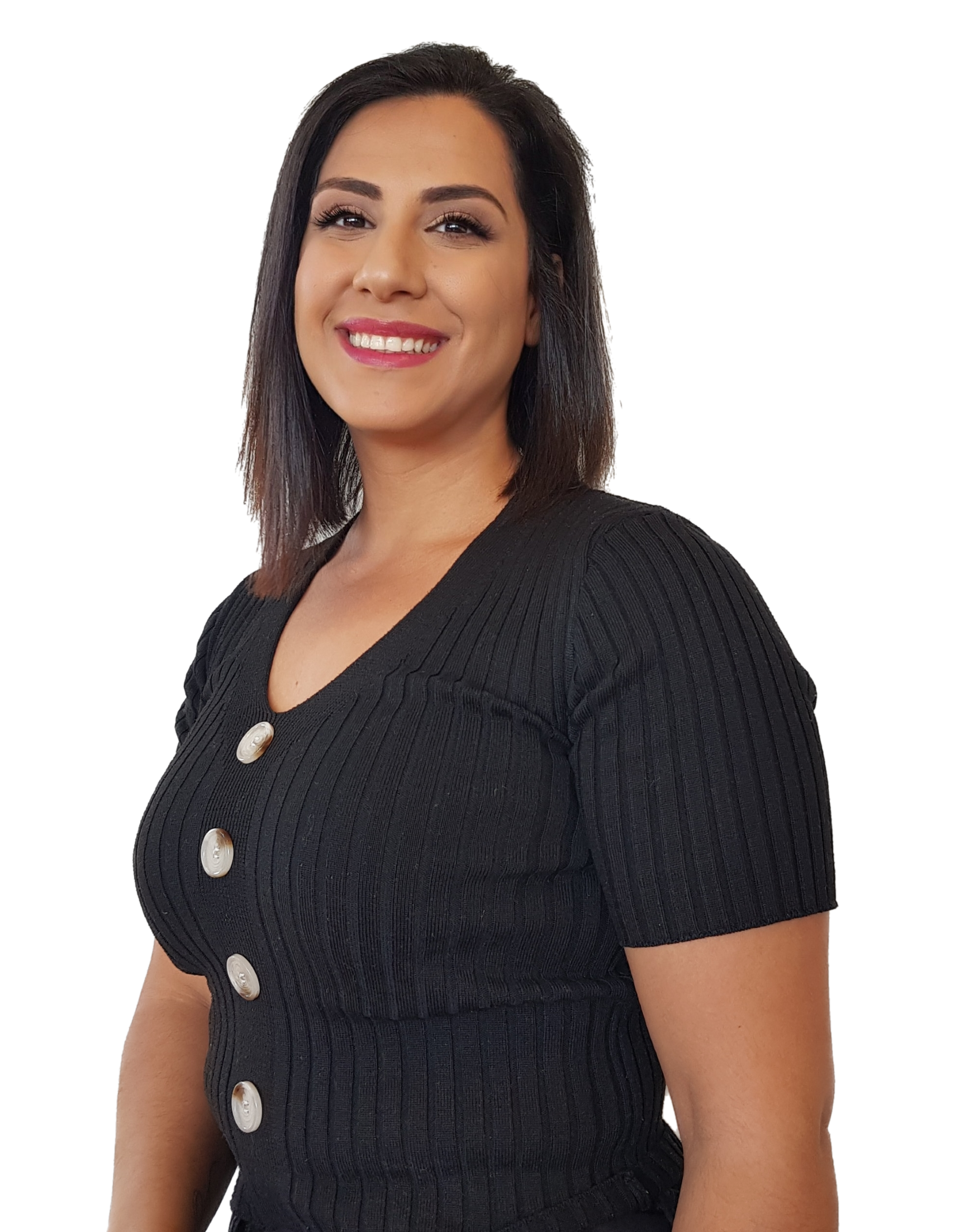
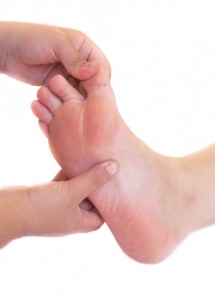 This is a soft tissue therapy for the treatment of skeletal muscle immobility and pain; focusing on releasing muscular shortness and tightness. This alternative medicine therapy aims to relax contracted muscles, improve blood and lymphatic circulation, and stimulate the stretch reflex in muscles.
We love the results we get with performing a myofascial release and the instant improvement in reducing muscle tightness. Because tight muscles can create an abnormal pull on surrounding structures, they can often have more of an effect on your body than you know. Loosening them up and getting the tissues functioning normally can then make a significant improvement to the lower limbs and relieve pressure from painful areas.
This is a soft tissue therapy for the treatment of skeletal muscle immobility and pain; focusing on releasing muscular shortness and tightness. This alternative medicine therapy aims to relax contracted muscles, improve blood and lymphatic circulation, and stimulate the stretch reflex in muscles.
We love the results we get with performing a myofascial release and the instant improvement in reducing muscle tightness. Because tight muscles can create an abnormal pull on surrounding structures, they can often have more of an effect on your body than you know. Loosening them up and getting the tissues functioning normally can then make a significant improvement to the lower limbs and relieve pressure from painful areas.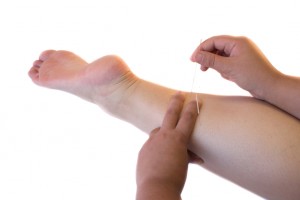 Dry needling is a procedure in which a very thin solid filament needle is inserted into the skin and muscle directly aimed at a myofascial trigger point. A myofascial trigger point consists of multiple contraction knots, which are related to the production of pain. If you think of knots in your muscles that when you push down on it elicits pain and you think ‘that’s the spot’ then that’s it!
Dry needling is rarely painful, often you’ll feel a twinge or contraction from the muscle when the needle hits the trigger point. While dry needling doesn’t often cause any bleeding, it occasionally can happen where bruising may occur. You can often feel a difference immediately after the therapy and many of our patients very much enjoy dry needling! Come in and have a chat about whether dry needling can help you too.
Dry needling is a procedure in which a very thin solid filament needle is inserted into the skin and muscle directly aimed at a myofascial trigger point. A myofascial trigger point consists of multiple contraction knots, which are related to the production of pain. If you think of knots in your muscles that when you push down on it elicits pain and you think ‘that’s the spot’ then that’s it!
Dry needling is rarely painful, often you’ll feel a twinge or contraction from the muscle when the needle hits the trigger point. While dry needling doesn’t often cause any bleeding, it occasionally can happen where bruising may occur. You can often feel a difference immediately after the therapy and many of our patients very much enjoy dry needling! Come in and have a chat about whether dry needling can help you too.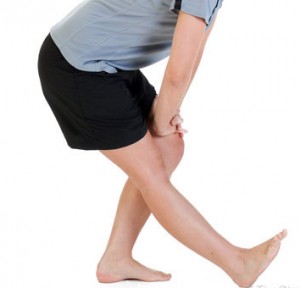 ‘Stretching and strengthening’ is often talked about as if the terms described the same mundane process – this is definitely not the case! Both stretching and strengthening individually have the ability to make massive changes in your foot/leg function and importantly your pain.
Strengthening works to give back intrinsic strength to muscles that currently have deficits contributing to your pains or problems. If muscles lack the strength to efficiently move the body and carry us, then they’ll be out-powered by other muscles which will, in turn, alter the biomechanics of the feet and legs. This will then place an abnormal strain on other areas and the painful cycle continues. Assessing muscle strength and function, and strengthening muscles where needed can then massively improve your bodies function and reduce pain. This isn’t just limited to the feet and legs – we often find that the muscles of the hips and lower back have a massive impact on the ability to walk and run efficiently and pain-free!
Stretching works on tight muscles to get them to the normal length for optimal function. Muscle tightness can create tension and strain on the surrounding bones, joints and muscles. It can alter the function of the feet and legs and contribute to the development of problems and pain. Identifying muscle tightness and regularly stretching can help to correct a number of issues. The muscles are often both stretched and strengthened for optimum results.
After your assessment, we prescribe customised exercises to meet your needs. These are introduced gradually. Developing a suitable exercise program — best done under expert supervision — will help you build strong, flexible muscles that will be less prone to injury.
‘Stretching and strengthening’ is often talked about as if the terms described the same mundane process – this is definitely not the case! Both stretching and strengthening individually have the ability to make massive changes in your foot/leg function and importantly your pain.
Strengthening works to give back intrinsic strength to muscles that currently have deficits contributing to your pains or problems. If muscles lack the strength to efficiently move the body and carry us, then they’ll be out-powered by other muscles which will, in turn, alter the biomechanics of the feet and legs. This will then place an abnormal strain on other areas and the painful cycle continues. Assessing muscle strength and function, and strengthening muscles where needed can then massively improve your bodies function and reduce pain. This isn’t just limited to the feet and legs – we often find that the muscles of the hips and lower back have a massive impact on the ability to walk and run efficiently and pain-free!
Stretching works on tight muscles to get them to the normal length for optimal function. Muscle tightness can create tension and strain on the surrounding bones, joints and muscles. It can alter the function of the feet and legs and contribute to the development of problems and pain. Identifying muscle tightness and regularly stretching can help to correct a number of issues. The muscles are often both stretched and strengthened for optimum results.
After your assessment, we prescribe customised exercises to meet your needs. These are introduced gradually. Developing a suitable exercise program — best done under expert supervision — will help you build strong, flexible muscles that will be less prone to injury.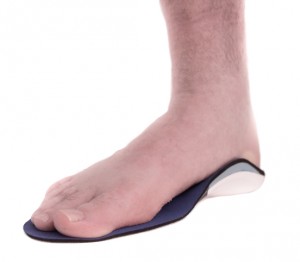 Orthotics are shoe inserts that are intended to correct an abnormal, or irregular walking and running patterns that have contributed to increased stress through the feet and legs and ultimately injury. Orthotics are not merely “arch supports”. An orthotic is designed to guide the mechanics of the foot to a precise degree which help the muscles and tendons to perform more efficiently, making standing, walking, and running more comfortable.
If you’re suffering from pain or injury, your orthotic is specifically designed to correct any biomechanical anomalies that are contributing to your injury and ongoing pain, and distribute weight away from the painful area.
In sports, orthotics are able to fit into your sports shoes (yes, even narrow footy boots!) to help you and your performance during the game, as well as to prevent injury and accommodate current injuries.
We love orthotics because of the massive change they make in our patients’ lives – and not to mention their pain levels. The way they alter foot biomechanics to help injuries and promote healthy foot function means our patient feel great, look great, and can get back to doing the things they love faster than ever.
Orthotics are shoe inserts that are intended to correct an abnormal, or irregular walking and running patterns that have contributed to increased stress through the feet and legs and ultimately injury. Orthotics are not merely “arch supports”. An orthotic is designed to guide the mechanics of the foot to a precise degree which help the muscles and tendons to perform more efficiently, making standing, walking, and running more comfortable.
If you’re suffering from pain or injury, your orthotic is specifically designed to correct any biomechanical anomalies that are contributing to your injury and ongoing pain, and distribute weight away from the painful area.
In sports, orthotics are able to fit into your sports shoes (yes, even narrow footy boots!) to help you and your performance during the game, as well as to prevent injury and accommodate current injuries.
We love orthotics because of the massive change they make in our patients’ lives – and not to mention their pain levels. The way they alter foot biomechanics to help injuries and promote healthy foot function means our patient feel great, look great, and can get back to doing the things they love faster than ever.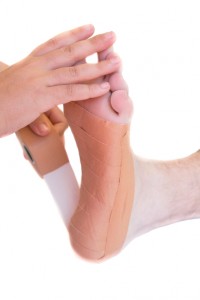 Strapping is the process of applying sports tape directly to the skin in order to maintain a stable position of bones and muscles during daily or athletic activities. This technique is used in sports medicine to reduce pain and aids recovery from overuse and other injuries.
By keeping the foot in a certain position that is dictated by the type of strapping applied, certain movements of the feet are restricted and the foot is supported in the best way as dictated by your Podiatrist. While the strapping is applied it can reduce pain and pressure from damaged structures and facilitate their healing.
We see many athletes who come to us before a game or a run to have their feet strapped to decrease their chance of injury while they’re still recovering, and in some cases reduce the risk of recurrence of a previous injury if there is a high risk in their intended activity.
Strapping is the process of applying sports tape directly to the skin in order to maintain a stable position of bones and muscles during daily or athletic activities. This technique is used in sports medicine to reduce pain and aids recovery from overuse and other injuries.
By keeping the foot in a certain position that is dictated by the type of strapping applied, certain movements of the feet are restricted and the foot is supported in the best way as dictated by your Podiatrist. While the strapping is applied it can reduce pain and pressure from damaged structures and facilitate their healing.
We see many athletes who come to us before a game or a run to have their feet strapped to decrease their chance of injury while they’re still recovering, and in some cases reduce the risk of recurrence of a previous injury if there is a high risk in their intended activity.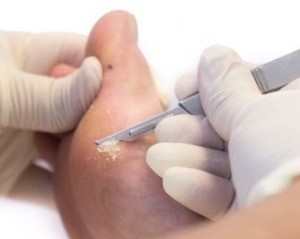 Caring for your skin and nails and maintaining a good level of general foot health can significantly improve your performance and foot function. Because our feet serve as the foundation of the body, any bumps, lumps and cracks (and the way we change the way we move because of them) can affect not just our feet and legs but the rest of our body too! Which can have a big negative impact on your performance during the game.
We use specialised podiatric equipment to instantly reduce thickened nails, sore corns, callus, warts and cracked heels and manage painful ingrown toenails. Remember, those little niggles you ignore can end up being a lot more serious and stop you from getting out there and doing the things you love!
Caring for your skin and nails and maintaining a good level of general foot health can significantly improve your performance and foot function. Because our feet serve as the foundation of the body, any bumps, lumps and cracks (and the way we change the way we move because of them) can affect not just our feet and legs but the rest of our body too! Which can have a big negative impact on your performance during the game.
We use specialised podiatric equipment to instantly reduce thickened nails, sore corns, callus, warts and cracked heels and manage painful ingrown toenails. Remember, those little niggles you ignore can end up being a lot more serious and stop you from getting out there and doing the things you love!